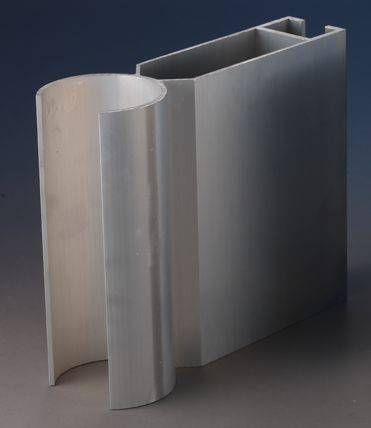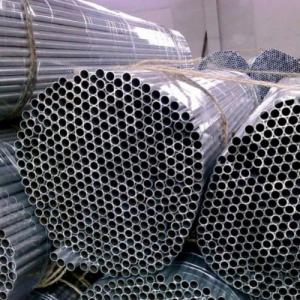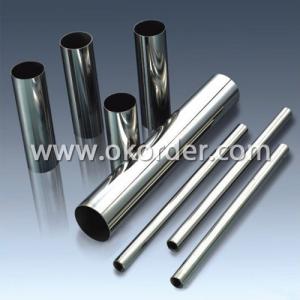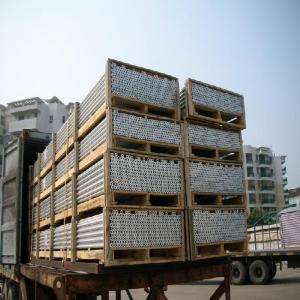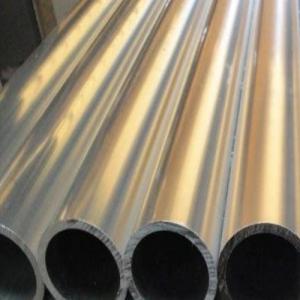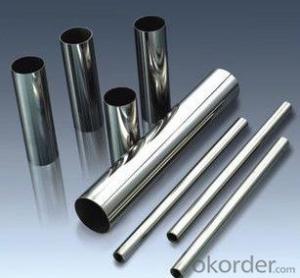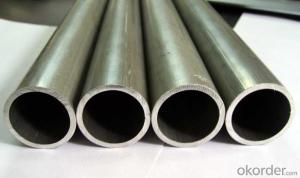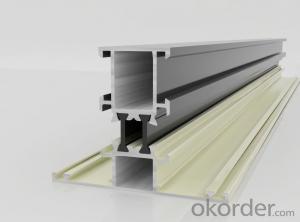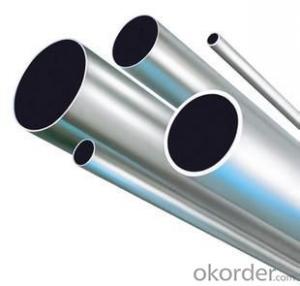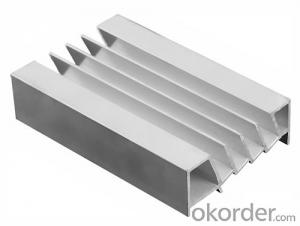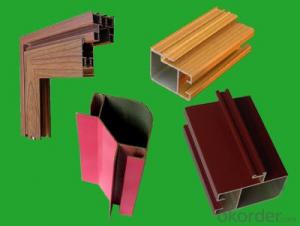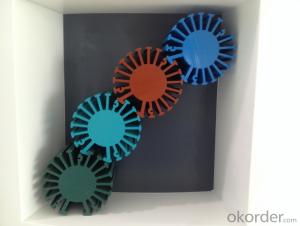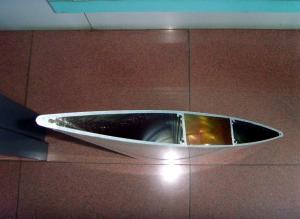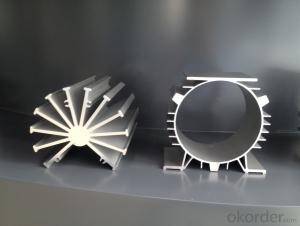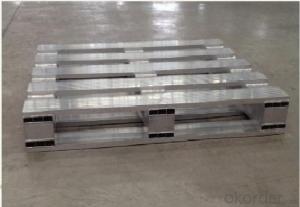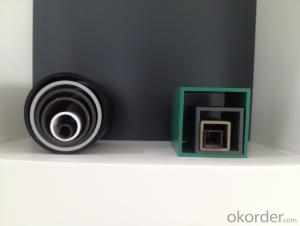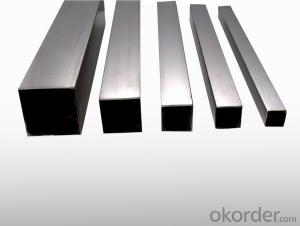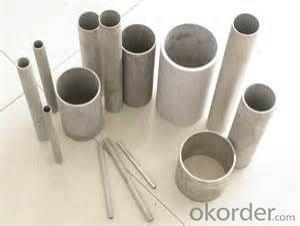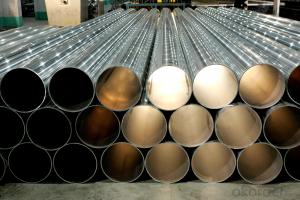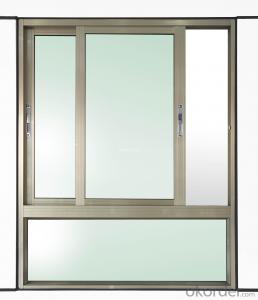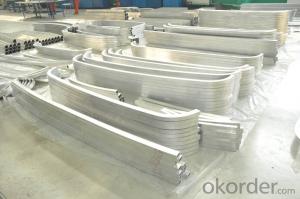Aluminum Curtain Wall Aluminum Pipes
OKorder Service Pledge
OKorder Financial Service
You Might Also Like
We are the largest aluminum profilemanufacture in
Please check the details as follows:
Material | Alloy Aluminum 6063,6061,6005,6082 or customer nominated |
Temper | T3, T4, T5, T6 and other |
Surface | Anodize, electrophoresis, powder coating, PVDF coating, wood grain painting, etc. |
Colour | Any colour based on Standard Germany RAL Mark |
Length | Not more than 16 meters |
Good Package | Inner plastic film /outside carton/wooden pallets |
Payment Method | T/T, L/C, etc |
Delivery Time | Normally 2-4 weeks, Delivery time can be consulted. |
Press Machine | 500-12500 tons all together 93 press lines. |
Fabrication | 1. Furniture;2. Drilling; 3. Bending; 4. Cutting; 5. Windows and doors;6.etc. |
Certificate | ISO/TS 16949,DNV,IRIS,CCS,AFA,etc. |
Dies | 1. Using our dies, no fee; |
2. Using customer drawing, opening dies, usually about 5~50 tons then the dies cost can be refunded. | |
3. Die cost is negotiable base on the order quantity | |
Capability | Annual output 800,000 tons |
- Q: How to handle the surface of the aluminum tube is bright, and will not have any impression after touching it
- Can be anodized by bright aluminum to meet your requirements.
- Q: What is the average lifespan of aluminum pipes?
- The average lifespan of aluminum pipes can vary depending on various factors such as the quality of the material, the environment in which they are used, and the maintenance and care they receive. Generally, aluminum pipes have a relatively long lifespan and can last for several decades. With proper installation, regular inspections, and timely repairs, aluminum pipes can serve their intended purpose for 30 to 50 years or even longer. However, it is important to note that external factors such as corrosion, exposure to harsh chemicals, or extreme temperature variations can significantly impact the lifespan of aluminum pipes. Therefore, regular maintenance and periodic evaluations are essential to ensure the longevity and performance of aluminum pipes.
- Q: Are aluminum pipes suitable for vacuum systems?
- Depending on the specific requirements and conditions of the system, aluminum pipes can be suitable for vacuum systems. Aluminum is a lightweight and corrosion-resistant material, which makes it a popular choice for a variety of applications, including vacuum systems. However, it is important to consider factors such as the level of vacuum needed, the temperature range, and the potential for outgassing. In certain instances, aluminum may not be the optimal choice, particularly for high vacuum applications or systems that require extremely low levels of outgassing. In such cases, materials like stainless steel or titanium might be more appropriate. It is essential to consult experts or engineers who specialize in vacuum systems to determine the most suitable material for a specific vacuum system.
- Q: Are aluminum pipes suitable for outdoor applications?
- Indeed, outdoor applications can indeed benefit from the use of aluminum pipes. The reason lies in the fact that aluminum is a lightweight and long-lasting material with remarkable resistance against corrosion, rendering it highly suitable for outdoor purposes. It can endure severe weather conditions, including rainfall, snowfall, and exposure to sunlight, without undergoing degradation or rusting. Furthermore, aluminum pipes boast an extended lifespan and demand minimal maintenance, thus emerging as an economical option for outdoor applications like irrigation systems, outdoor furniture, handrails, and structural supports.
- Q: Why is copper pipe used instead of copper aluminum composite tube or aluminium pipe?
- Generally, there are dimension indexes, inner diameter, outer diameter and wall thickness.Strength index, pipe strength indicators have radial compressive strength, that is, ring stiffness, flexibility index, bending index, impact strength, etc.For drinking water pipes, there are technical aspects of health indicators, as well as water pressure indicators.For the communications industry, there are other technical requirements.
- Q: What is the typical wall thickness of aluminum pipes?
- The typical wall thickness of aluminum pipes can vary depending on the specific application and industry requirements. However, common wall thicknesses for aluminum pipes range from 0.065 inches to 0.250 inches.
- Q: What are the different types of aluminum pipes available?
- Various applications have access to a range of aluminum pipes, each with distinct characteristics. 1. Seamless Aluminum Pipes: These pipes lack welds or seams, making them highly durable and capable of withstanding high pressure and temperature. Industries such as aerospace, automotive, and marine commonly employ seamless aluminum pipes. 2. Welded Aluminum Pipes: By welding together two or more aluminum pieces, these pipes provide a cost-effective solution suitable for applications that do not require the same strength as seamless pipes. Construction, irrigation, and HVAC systems often utilize welded aluminum pipes. 3. Extruded Aluminum Pipes: Shaping heated aluminum billets through a die results in continuous pipes with a constant cross-section. These pipes are lightweight, corrosion-resistant, and possess excellent thermal conductivity, making them prevalent in construction, automotive, and electrical industries. 4. Drawn Aluminum Pipes: Reducing the diameter and increasing the length of an extruded aluminum tube through a die produces drawn aluminum pipes with improved surface finish and tighter tolerances. Furniture, lighting fixtures, and heat exchangers frequently incorporate drawn aluminum pipes. 5. Aluminum Alloy Pipes: Aluminum alloys, consisting of aluminum mixed with elements like copper, magnesium, or zinc, form these pipes. Aluminum alloys enhance strength, corrosion resistance, and other pipe properties. Aerospace, automotive, and structural engineering industries utilize aluminum alloy pipes. When selecting an aluminum pipe, it is crucial to consider project or application-specific requirements, such as pressure rating, temperature resistance, corrosion resistance, and cost. Careful consideration of these factors ensures the most suitable option is chosen.
- Q: Can aluminum pipes be used in HVAC systems?
- Yes, aluminum pipes can be used in HVAC systems. Aluminum is a popular choice for HVAC systems due to its excellent thermal conductivity, corrosion resistance, and lightweight nature. It is commonly used for refrigerant lines, air distribution, and heat transfer applications in HVAC systems.
- Q: Steel pipe can flange connection, aluminum pipe can flange connection? How about copper tubes?
- Yes, PPR flange, PE flange is much more
- Q: What are the different joining methods for aluminum pipes?
- Aluminum pipes can be joined using various methods, each having its own benefits and applications. 1. Welding, the most common method, involves melting the pipe edges and fusing them together with heat and a filler material. TIG and MIG welding are commonly used for aluminum pipes but require skilled labor and specialized equipment. 2. Mechanical joining techniques include flanging, threading, and compression fittings. Flanging involves creating a flange on the pipe end and connecting it to another flange using bolts or screws. Threading involves cutting threads on the pipe ends and using threaded connectors. Compression fittings tightly clamp the pipes together using a compression nut and ferrule. These methods are easy to perform and do not require welding, making them suitable for specific applications. 3. Brazing uses a lower melting point filler material, typically a brass alloy, to bond aluminum pipes. The filler material is heated until it melts and flows into the joint, creating a strong bond. Precise temperature control and flux are necessary for proper bonding. 4. Adhesive bonding employs specialized adhesive or epoxy to bond aluminum pipes. The adhesive is applied to the joint, and the pipes are pressed together and left to cure. Although adhesive bonding provides a strong and lightweight joint, it may not be appropriate for high-temperature applications. The choice of joining method depends on factors such as the application, required strength, cost, and availability of equipment or expertise. It is crucial to consider these factors carefully and seek advice from experts to determine the most suitable joining method for aluminum pipes in a specific situation.
Send your message to us
Aluminum Curtain Wall Aluminum Pipes
OKorder Service Pledge
OKorder Financial Service
Similar products
Hot products
Hot Searches
Related keywords

